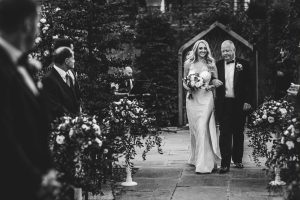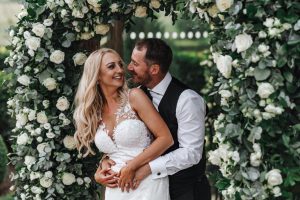Getting Married: An Overview through Proposal to Vows
Congratulations! You’ve found the love of your life and you’re ready to take the next big step- getting married. But where do you start? With so many details to consider, planning a wedding can be overwhelming and stressful. That’s why we’ve created a step-by-step guide to help you navigate the journey from proposal to vows. From choosing the perfect engagement ring to selecting a venue, creating a budget, and sending out invitations, we’ve got you covered. We’ll also provide tips on how to personalize your wedding with unique touches that reflect your personality and style. And, of course, we’ll guide you through the ceremony itself, helping you write your vows, choosing readings, and more. With our comprehensive guide, you can relax and enjoy the journey, knowing that you’re well-prepared for the big day. So, let’s get started on this exciting new chapter of your life!

Choosing the perfect engagement ring
This is an exciting time in your life, and choosing the perfect engagement ring is an important step in the journey to your wedding day. The engagement ring is a symbol of your love and commitment, and it’s important to choose a ring that reflects your style and personality.
When it comes to choosing the perfect engagement ring, there are several factors to consider. The first is the type of metal you prefer. Popular choices include yellow gold, white gold, and platinum. The next consideration is the shape and size of the diamond. The most popular diamond shapes are round, princess, emerald, and cushion. The size of the diamond is also an important factor to consider.
In the 20th and 21st centuries, engagement rings have become more diverse and innovative, reflecting the personal tastes and preferences of the couples. Some of the popular types of engagement rings in this period are:
– Solitaire rings:
These are rings that feature a single diamond or gemstone at the centre of a metal band. They are the most timeless and classic type of engagement rings, and can be customized with different shapes, sizes, and settings of the stone.
– Three-stone rings:
These are rings that have three stones, usually a larger one in the middle and two smaller ones on the sides. They are also known as trilogy or trinity rings, and they symbolize the past, present, and future of the relationship.
– Cluster rings:
These are rings that have a number of smaller stones arranged around a larger centre stone, creating a dazzling effect. They are also called halo rings, and they can have different shapes and patterns of the stones.
– Pavé rings:
These are rings that have tiny diamonds or gemstones set closely together on the band, creating a smooth and sparkling surface. They can also have a larger centre stone or a halo setting for more brilliance.
– Channel-set rings:
These are rings that have a row of diamonds or gemstones set into a groove in the band, creating a sleek and modern look. They can also have a centre stone or a halo setting for more contrast.
– Bezel-set rings:
These are rings that have a metal rim around the stone, holding it securely in place. They are ideal for active lifestyles, as they protect the stone from scratches and damage. They can also have different shapes and styles of the metal rim.
– Tension-set rings:
The most common kinds of engagement rings you could see as a goldsmith include a few of these. Of course, based on your consumers’ interests & budget, here are a tonne more permutations and combinations you may come up with. The ring’s construction, quality, and compatibility with the wearer’s personality and style should all be taken into consideration.
The setting is the next step after deciding on the material to be used & the dimensions, shape, and colour of the diamond. Where the diamond is put in the ring is referred to as the setting. Channel, bezel, and prong are common settings. Lastly, take into account any extra embellishments like engraving or side stones.
Don’t forget that the engagement ring represents your commitment and affection. Select an engagement ring that you love and whic
h accurately captures your own taste and character.

Deciding on the wedding budget
One of the most important steps in planning your wedding is creating a budget. A wedding can be an expensive event, and it’s important to set a budget early on to avoid overspending.
To create a wedding budget, start by listing all of the expenses you’ll incur. This includes the venue, catering, photography, music, flowers, and attire. Once you’ve listed all of the expenses, assign a dollar amount to each. Be sure to leave some room in your budget for unexpected expenses.
Next, consider your sources of funding. Will you be paying for the wedding yourselves, or will family members be contributing? If family members are contributing, be sure to have a frank discussion about how much they are willing to contribute and how that money will be used.
Finally, stick to your budget! It can be tempting to overspend on certain items, but remember that every dollar you spend on one item is a dollar you can’t spend on another. Prioritize the items that are most important to you and be willing to compromise on others.
We recommend speaking to our experienced events team who can help you from start to finish; with your budget to anything from an idea.
Setting the wedding date and venue
The next step in planning your wedding is setting the date and selecting a venue. The date and venue are closely linked, as popular venues may be booked several months or even years in advance.
When selecting a date, consider the season and weather. If you plan to have an outdoor wedding, choose a date in a season with mild weather. If you’re on a tight budget, consider having a weekday wedding or a wedding during the off-season.
Once you’ve selected a date, it’s time to choose a venue. Consider the number of guests you’ll be inviting and choose a venue that can comfortably accommodate that number. You’ll also want to consider the location, parking, and accessibility for your guests.
When touring venues, be sure to ask about any restrictions or requirements. Some venues may require you to use their preferred vendors, while others may have restrictions on decorations or music. Be sure to read the contract carefully before signing.

Creating the guest list and sending out invitations
1. Write a list of everyone you’d even consider inviting.
This is your initial brainstorming session, where you and your partner write down all the names of people who you would love to have at your wedding if money and space were no object. Don’t worry about the numbers or the details at this stage, just have everyone on paper.
2. Narrow down the list.
Now that you have your dream list, it’s time to get realistic. You need to consider your budget, your venue capacity, and your personal preferences. A good way to do this is to divide your list into tiers, such as must-invites, really-want-to-invites, and nice-to-invites. You can also use some criteria to take people off , such as not inviting plus-ones, children, co-workers, or distant relatives.
3. Finalize the guest list.
Once you have your tiers and criteria, you can start finalizing your guest list. You may need to compromise with your partner, your parents, or other stakeholders who have a say in the guest list. Try to be fair and respectful of everyone’s wishes, but also stick to your vision and priorities. You can use a tool like The Knot Guest List or Planning Wedding Guest List to easily manage and track your guests’ information and RSVPs.
4. Choose your invitations.
Now that you have your guest list ready, you can start thinking about your invitations. You may want to choose invitations that match your wedding theme, style, and budget. You can browse through different designs and options on Shutterfly or The Knot Invitations. You can also create a free wedding website with The Knot or Shutterfly to share more details with your guests and collect their RSVPs online.
5. Send out your invitations.
The general rule is to send out your invitations about six to eight weeks before your wedding date, or earlier if you’re having a destination wedding or a lot of out-of-town guests. You can either mail paper invitations or send digital ones via email or text. If you choose paper invitations, you can save time and money by printing custom envelopes with The Knot Envelopes. If you choose digital invitations, you can use The Knot Email Designs to match your paper ones.
6. Track RSVP
responses.
Once you send out your invitations, you need to keep track of who is coming and who is not. You can use The Knot Guest List or Planning Wedding Guest List to automatically update your guest list with RSVP responses and other information, such as meal choices or song requests. You can also send reminders to guests who haven’t responded yet via text or email.
7. Communicate with guests.
As your wedding day approaches, you may need to communicate with your guests about important details, such as directions, parking, dress code, or COVID-19 protocols. You can use The Knot Messages or Planning Wedding Messages to easily send group texts or emails to your guests with helpful templates. You can also update your wedding website with any changes or announcements.
Choosing the wedding attire
The bride’s dress and the groom’s suit or tuxedo are an important part of any wedding. When choosing your wedding attire, consider the formality and style of your wedding.
For the bride, there are many options to choose from, including traditional ballgowns, modern sheath dresses, and bohemian-inspired dresses. Consider the fabric, silhouette, and embellishments when choosing your dress.
For the groom, there are several options as well, including classic tuxedos, modern suits, and more casual options. Consider the colour, fabric, and style when choosing your attire.
Don’t forget about the accessories! The bride may want to consider a veil or hairpiece, while the groom may want to choose a tie or pocket square that complements the wedding colours.
Selecting vendors – caterers, photographers, florists, etc.
Selecting vendors for your wedding can be overwhelming, but it’s an important step in ensuring that your wedding day runs smoothly. Start by researching vendors in your area and reading reviews from other couples.
When selecting vendors, consider the style and theme of your wedding. For example, if you’re having a rustic wedding, you may want to choose a florist who specializes in wildflower arrangements.
Be sure to ask each vendor for references and a portfolio of their work. You’ll also want to discuss pricing and any additional fees before signing a contract.
Finalizing the wedding details
As the wedding day approaches, there are several final details to consider. This includes creating a seating chart, finalizing the menu, and arranging transportation for the wedding party.
You may also want to consider any special touches that will make your wedding unique. This could include personalized favours for your guests or a special song for your first dance.
Finally, be sure to communicate with your vendors and wedding coordinator to ensure that everyone is on the same page.
if your looking for wedding coordinators
The Old Hall Ely can take any requests you need and make it happen.
The wedding ceremony and reception
It’s the big day! The wedding ceremony and reception are the culmination of all your planning and preparation.
For the ceremony, consider adding personal touches that reflect your personality and style. This could include writing your own vows or choosing readings that are meaningful to you.
For the reception, consider creating a timeline of events to keep the evening running smoothly. This could include a cocktail hour, dinner, speeches, and dancing.
Be sure to communicate with your wedding coordinator and vendors throughout the evening to ensure that everything runs smoothly.
Tips for a stress-free wedding day
Why not speak to us, We can take that stress off your special day & make what needs to happen; happen.
Wedding planning can be stressful, but there are several things you can do to ensure that your wedding day is as stress-free as possible.
First, consider hiring a wedding coordinator. A coordinator can help you with all of the details leading up to the wedding and can be a point of contact for vendors on the day of the wedding.
Second, be sure to delegate tasks to your wedding party and family members. This could include picking up flowers, setting up decorations, or running errands.
Finally, take some time for yourself on the day of the wedding.
Conclusion
Congratulations on your wedding! Planning a wedding can be stressful, but with our step-by-step guide, you can relax and enjoy the journey. From choosing the perfect engagement ring to selecting a venue, creating a budget, and sending out invitations, we’ve got you covered. Remember to personalize your wedding with unique touches that reflect your personality and style, and don’t forget to take some time for yourself on the big day. Best wishes for a happy and successful wedding!
And last but not least – if you still feel overwhelmed don’t worry! we can take the stress away here at The Old Hall Ely – with many years experience and beautiful grounds we are sure to make any day special

